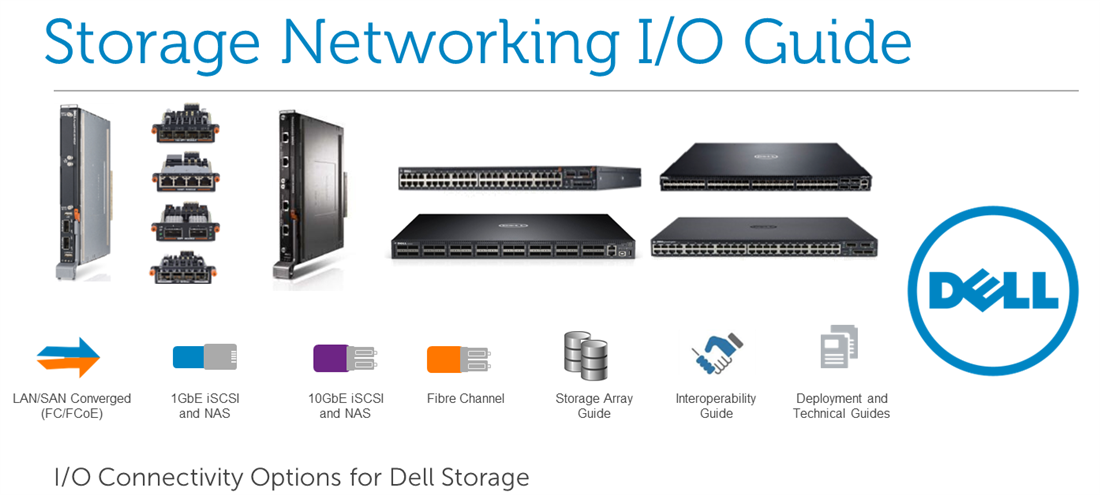Building a storage network that addresses the rapid growth in data complexity and high demand for data availability is essential. Rather than taking a “build-as-you-go” approach, it’s far more cost effective for IT departments to design a network that meets both their current and future needs, including the demands of virtualization, cloud, big data, mobility and collaboration.
To simplify this process, we have developed a Storage Networking I/O Guide that lays out the essential components needed to deploy a storage networking topology that best fits the goals and design philosophy of your organization. The Storage Networking I/O Guide provides direction based on the main methods of today’s data centers, including
- LAN/SAN Converged or FC/FCoE (Fibre Channel over Ethernet)
This method looks to consolidate SAN and LAN traffic through a single ubiquitous medium (Ethernet), with major savings through eliminating redundant infrastructures for both the SAN and the LAN. The cost savings are delivered by consolidating the physical links between the servers and the Top-of-rack switches while ensuring that no change is required from the storage arrays. With this approach, the savings can be substantial (see the Dell Converged I/O Calculator). The Dell Storage Networking I/O Guide lists a range of products to build out an effective LAN/SAN storage network.
- iSCSI and NAS
iSCSI allows SCSI traffic to be transmitted across an IP network. With data center bridging (DCB), customers can also have a LAN and SAN consolidated architecture with improved reliability and performance for iSCSI based storage. The Dell Storage Networking I/O Guide covers a range of products for both 1GbE and 10GbE iSCSI as well as NAS solutions.
- Fibre Channel
Fibre Channel continues to be a strong presence in the data center and a common method for building a storage network. Dell provides solutions for Fibre Channel that range from low-port count entry-level environments to very high-density Director class switches suitable for Cloud-enabled data centers.
The guide follows up with a cross-product interoperability matrix, along with links to relevant deployment and technical guides. Without a well-planned strategy for building a storage network — one that includes both the critical networking pieces as well as storage in its overall strategy — cost quickly becomes a limiting factor. We hope this Storage Networking I/O Guide will reduce overspend in your IT environment and provide an invaluable resource to building a storage network that meets your price and performance demands.
We would love to hear from you, so leave us a comment. Don’t forget to follow us at @DellNetworking on Twitter to stay updated.
